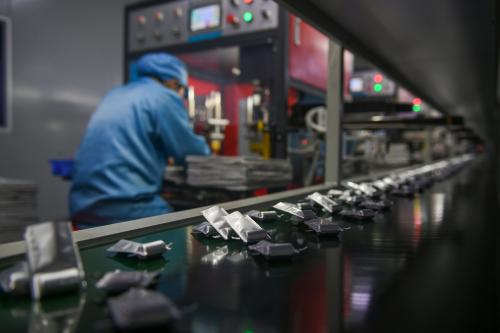Employers added 288,000 to their payrolls in June, a heartening improvement over the pace of job gains seen in the previous 12 months, when payrolls grew an average of slightly more than 200,000 a month. Over the past three months employers have added 272,000 jobs a month, almost the fastest 3-month rate of gain in payrolls we have seen in the recovery. The only 3-month period with faster job gains occurred in the spring of 2010 when the federal government was ramping up Census Bureau payrolls for the decennial census.
One of the reasons for the accelerating pace of job gains is that government employment is no longer shrinking. Since February public payrolls have increased 15,000 a month, a notable turnaround compared with earlier months of the recovery. NBER analysts estimate that the Great Recession ended in June 2009. Between that month and January 2014 government payrolls shrank about 14,000 every month, an astonishing and depressing record for a nation struggling to recover from its worst recession in seven decades. On net the turnaround in government employment has boosted payroll gains in recent months by about 25,000 a month compared with the first 55 months of the recovery.
Employment gains reported in the BLS household survey were equally encouraging. Respondents in that survey reported an additional 407,000 employed family members in June compared with May. Over the past year employment reported by survey respondents has increased nearly 179,000 a month, somewhat slower than the monthly payroll increases in the employer survey, which averaged 208,000 a month. Robust employment gains translated into a shrinking number of unemployed. Unemployment fell 325,000 in June and has now shrunk 5.9 million below the peak level attained in October 2009. The unemployment rate edged down 0.2 points to 6.1%, its lowest level since September 2008 when Lehman Brothers went into bankruptcy, pushing the U.S. into the worst phase of the financial crisis.
Some of the numbers from the latest household survey are less encouraging. About 275,000 additional workers reported they are working in part-time positions even though they want to work full time. The number of workers in this situation was almost 3 million higher in June 2014 than in December 2007, the final month of the 2001-2007 economic expansion. The number of adults who hold a job or were looking for work edged up 81,000 in June, but the labor force participation rate remains 3.2 percentage points lower than it was at the end of the last economic recovery. Roughly half of the decline can be explained by population aging—a higher percentage of adults are past the age of 60 and more likely to be retired than working or looking for a job. Nonetheless, almost half of the decline is linked to lower participation rates among adults who would be expected to be employed or looking for work if job openings were abundant.
The employer survey shows that wage inflation remains extremely low, notwithstanding the tightening job market. In the 12 months ending in June hourly wages increased just $0.47, or 2.0%. Adjusting wages for changes in the price level, real hourly and weekly earnings are virtually unchanged. For Americans who depend on wage income, the main benefit of a healthier job market has been the recovery in employment levels. Most gains in worker productivity have flowed to companies in the form of higher profits rather than to workers in the form of higher inflation-adjusted pay.
The Brookings Institution is committed to quality, independence, and impact.
We are supported by a diverse array of funders. In line with our values and policies, each Brookings publication represents the sole views of its author(s).


Commentary
Employment Gains Accelerate in June
July 3, 2014